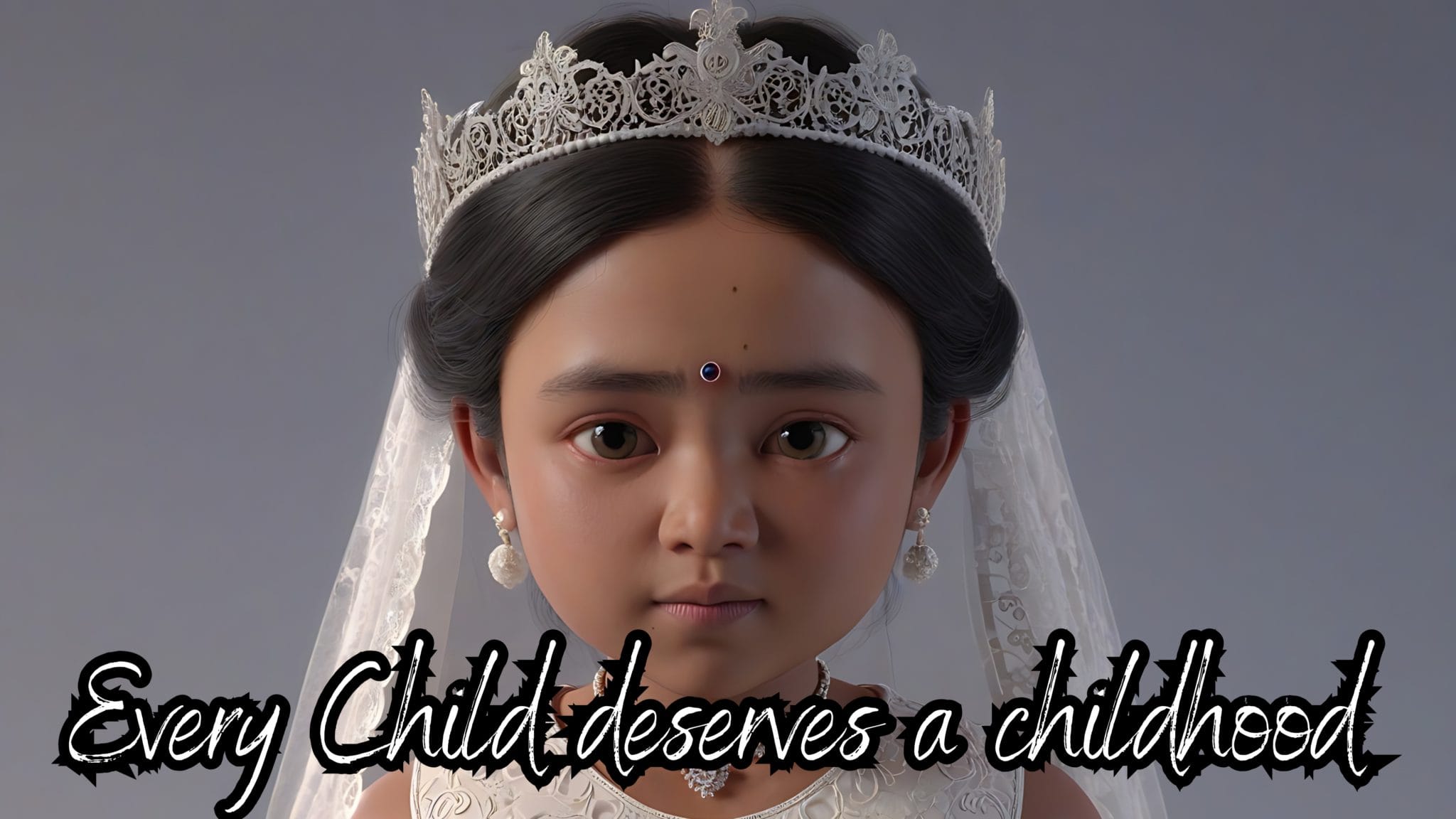Assam Unbound: Liberating Futures from the Grip of Child Marriage

Editorial by Advocate Irfan Khondker, Dhubri, January 14, 2024: Child marriage persists as a formidable challenge in India, with approximately 27% of girls being wed before the legal age of 18, a violation of their fundamental rights. This deeply entrenched practice, particularly prevalent in rural areas and among impoverished communities, exacts a toll on the health, education, and holistic development of adolescent girls. Assam, facing its share of this societal malaise, grapples with alarming statistics as an estimated 31% of girls are married off before reaching the age of 18. This editorial delves into the negative ramifications of child marriage in Assam, exploring the socio-economic and health-related repercussions on the affected girls and the broader society.
Assam, a state of cultural diversity and historical significance, confronts the scourge of child marriage with a considerable prevalence rate. According to a health department report, on average, 31% of girls in Assam are compelled into marriage before attaining the legal age of 18. Disturbingly, Dhubri stands out as the district with the highest incidence of child marriages, followed closely by Barpeta, Nagaon, and other areas characterized by a higher concentration of minority populations. The intersectionality of factors contributing to child marriage demands a comprehensive and nuanced approach to address this societal challenge.
In response to the pervasive issue of child marriage, the Assam government initiated a crackdown, resulting in the arrest of over 3000 individuals involved in facilitating such marriages. While the intent behind this action is rooted in safeguarding public health and welfare, the ramifications have proven complex and multifaceted. Families find themselves separated, and a stable source of income disrupted, eliciting protests, particularly from women in districts where the crackdown has been most severe.
The government’s proactive approach stems from the registration of over 4,100 First Information Reports (FIRs) across the state, necessitating decisive action. A cabinet sub-committee has been formed to devise a Rehabilitation Policy within 15 days, addressing the needs and challenges faced by victims of child marriage. However, the enforcement strategy, particularly the application of the Protection of Children from Sexual Offences Act, 2012, and the Prohibition of Child Marriage Act, 2006, raises legal and ethical dilemmas given the consensual nature of some marriages and the existence of young mothers within this cohort.
Child marriage leaves an indelible mark on the fabric of society, perpetuating a cycle of poverty, gender inequality, and compromised human capital. The repercussions extend beyond the individuals directly involved, impacting the broader socio-economic landscape. Key negative impacts include:
Violation of Human Rights and Dignity:
Child marriage constitutes a blatant violation of the human rights and dignity of girls, who are often coerced into unions with older men without their informed consent. This robs them of agency over their own lives and denies them the opportunity to shape their destinies.
Deprivation of Education and Career Opportunities:
Girls forced into early marriages are systematically denied access to education and career opportunities. Expectations of assuming familial responsibilities at a young age overshadow their potential for personal growth and development, perpetuating a cycle of limited prospects.
Exposure to Health Risks:
Child brides face elevated health risks, including early pregnancies, maternal mortality, sexually transmitted diseases, and domestic violence. These health challenges are exacerbated by their physiological immaturity, often leading to adverse outcomes for both mother and child.
Perpetuation of Poverty and Gender Inequality:
Child marriage reinforces the cycle of poverty and gender inequality. With restricted access to resources and decision-making power within households and communities, girls are systematically marginalized, hindering broader efforts towards economic and social development.
Hampering Societal Development:
Beyond individual hardships, child marriage hampers the social and economic development of society at large. By limiting the human capital and potential of a significant population segment, it restricts the overall progress and prosperity of the community.
The Assam government’s crackdown on child marriage, while a well-intentioned initiative, has raised pertinent legal and ethical questions. The simultaneous application of the Protection of Children from Sexual Offences Act, 2012, and the Prohibition of Child Marriage Act, 2006, poses challenges, especially when considering consensual marriages and the existence of young mothers within this demographic. Striking a balance between legal enforcement and compassionate consideration of individual circumstances becomes imperative in navigating this complex terrain.
Child marriage in Assam, as evidenced by the statistics and the recent government crackdown, demands urgent and comprehensive intervention. While law enforcement is a crucial aspect of the solution, it must be coupled with awareness campaigns, community engagement, and support systems to address the root causes. The negative impacts of child marriage on individual lives and societal progress underscore the urgency of collective efforts to eradicate this deeply ingrained practice. The focus should extend beyond punitive measures to encompass holistic strategies that empower girls, educate communities, and foster an environment conducive to breaking the shackles of this harmful tradition. Only through a concerted and sustained effort that combines legal rigor with empathetic considerations can Assam break free from the shackles of child marriage.
In conclusion, the negative impact of child marriage in Assam is both pervasive and profound. The recent government crackdown, while emblematic of the commitment to eradicating this social ill, necessitates a careful and nuanced approach. Balancing legal measures with an understanding of the socio-economic complexities and individual circumstances is crucial. It is a call to action for all stakeholders—government bodies, community leaders, non-governmental organizations, and citizens—to collaborate in crafting comprehensive solutions. Assam’s journey towards liberation from the grip of child marriage is not only a legal imperative but a moral obligation to ensure a brighter and more equitable future for its young population. The collective resilience and determination of the people of Assam can pave the way for a society where the potential of every individual, irrespective of gender, is nurtured and celebrated, unburdened by the chains of early and forced marriages.




